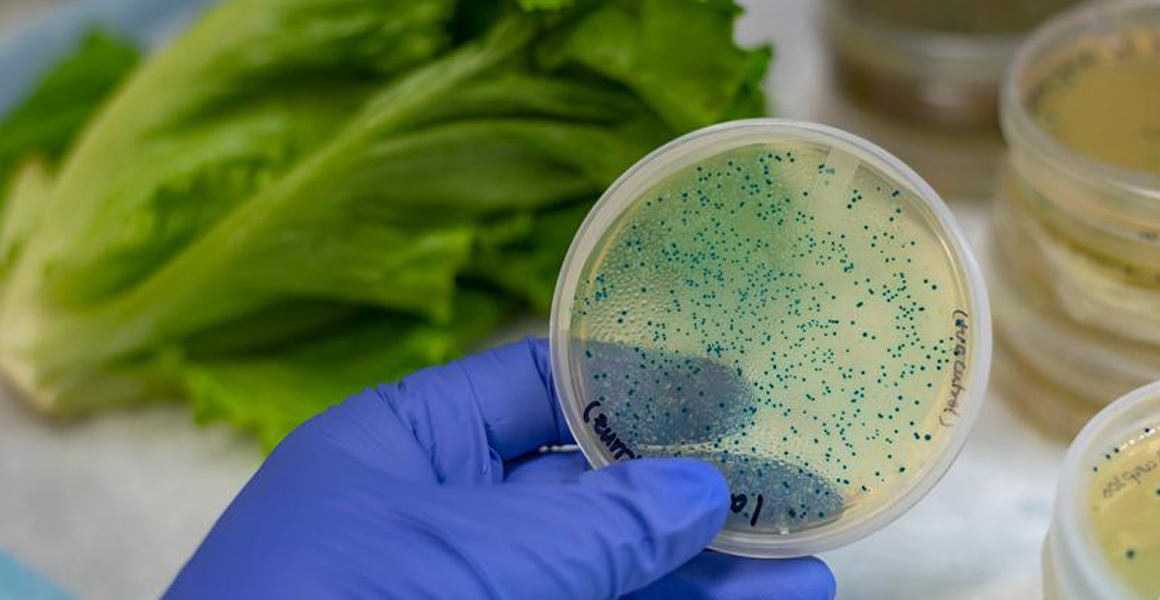
An update on the Seasonal Worker Programme expansion
22 September 2020
Cold plasma treatment aims to keep fresh produce safe
29 September 2020The following update outlines the vegetable industry’s export performance in the first half of 2020, and AUSVEG’s export activities under the Hort Innovation-funded Vegetable Industry Export Program (VG16061).
This month’s update also provides a summary of fresh vegetable trade data from January to June 2020, as well as an update of AusTrade’s Export Market Development Grant (EMDG) program.
For any further information regarding this update, please contact AUSVEG on 03 9882 0277 or at export@ausveg.com.au.
Fresh Vegetable Trade Update – January to June 2020
With a number of vegetable export crops facing challenges during the first half of 2020, the vegetable export supply chain proved resilient with over 126,000 tonnes of fresh vegetables shipped to international markets during the COVID-19 pandemic.
Exports by Destination Market
Singapore remained the top export destination for Australian vegetable exports, with an increase in value in the first half of 2020 by 9.7 per cent from $22.5 million to $24.7 million; export volume was up by 2.9 per cent from 13,743 tonnes to 14,139 tonnes.
The United Arab Emirates (UAE) rose 5.6 per cent in value but experienced a decline of 25 per cent in volume. Malaysia saw a similar trend, with a rise in export value of 2.4 per cent and a decline of 5.7 per cent in volume. South Korea experienced the largest decline in trade of the top export markets, with an average drop of 24 per cent in both value and volume.
| Trade Partner | 2019 | 2020 | ▲ 19/20 | |||
| $ AUD | Tonnes | $ AUD | Tonnes | $ AUD | Tonnes | |
| Singapore | $ 22,558,483 | 13,743 | $ 24,753,755 | 14,139 | 9.7% | 2.9% |
| UAE | $ 16,726,766 | 25,248 | $ 17,668,781 | 18,917 | 5.6% | -25.1% |
| Malaysia | $ 14,087,171 | 14,028 | $ 14,427,888 | 13,233 | 2.4% | -5.7% |
| Hong Kong | $ 9,289,295 | 5,252 | $ 9,002,463 | 5,049 | -3.1% | -3.9% |
| South Korea | $ 10,405,523 | 17,037 | $ 7,913,251 | 13,099 | -24.0% | -23.1% |
| Saudi Arabia | $ 8,496,639 | 9,330 | $ 7,595,461 | 8,558 | -10.6% | -8.3% |
| Thailand | $ 8,244,871 | 9,798 | $ 6,982,558 | 7,455 | -15.3% | -23.9% |
| Qatar | $ 6,055,595 | 6,435 | $ 6,212,918 | 6,061 | 2.6% | -5.8% |
| Philippines | $ 3,192,395 | 4,923 | $ 4,346,515 | 7,178 | 36.2% | 45.8% |
| Indonesia | $ 2,634,526 | 2,256 | $ 3,911,380 | 5,495 | 48.5% | 143.6% |
Table 1: Change in vegetable exports by destination market January to June 2019-2020
Exports by Crop
For the first half of 2020, root vegetables such as carrots, potatoes and onions continued to ship significant export volumes. Notably, potato export value increased from $23.8 million to $27.2 million, nearly 14 per cent up on the same period in 2019. Pumpkin is the only vegetable that has recorded an increase in both export value and volume. Pumpkin exports grew by 31.4 per cent, from $2.5 million to $3.3 million and an extra 170 tonnes in volume from 1,456 tonnes in 2019 to 1,633 tonnes in 2020.
The figures in Table 2 below outline the total exports for the January to June 2020 period, but do not highlight monthly fluctuations for different crops exports. Over the course of these six months, perishable air freighted products saw a drop in exports on a month to month basis, albeit with some exceptions for certain crops into specific markets. Generally, sea freighted hard vegetable products performed better than the perishable vegetable exports; however, carrots, potatoes and onions also experienced some fluctuations in trade volumes from month to month.
| Trade Partner | 2019 | 2020 | ▲ 19/20 | |||
| $ AUD | Tonnes | $ AUD | Tonnes | $ AUD | Tonnes | |
| Carrots | $ 47,307,383 | 53,477 | $ 45,883,484 | 50,905 | -3.0% | -4.8% |
| Potatoes | $ 23,875,436 | 39,248 | $ 27,196,115 | 34,950 | 13.9% | -11.0% |
| Onions | $ 34,938,301 | 41,233 | $ 26,143,109 | 31,717 | -25.2% | -23.1% |
| Brassicas | $ 9,541,853 | 2,960 | $ 9,265,198 | 2,214 | -2.9% | -25.2% |
| Lettuce | $ 6,134,555 | 909 | $ 4,607,694 | 675 | -24.9% | -25.7% |
| Celery | $ 4,985,482 | 2,825 | $ 4,320,040 | 2,494 | -13.3% | -11.7% |
| Pumpkins | $ 2,528,451 | 1,456 | $ 3,322,804 | 1,633 | 31.4% | 12.2% |
Table 2: Vegetable exports by crop January to June 2019-2020
AUSVEG Export Project Update
Export Readiness & Training
AUSVEG and the Export Council of Australia (ECA) have recently launched a new online e-learning training program for aspiring vegetable exporters.
The Export Fundamentals for Australian Fruit & Vegetable Growers: From Farmgate to International Markets course contains 11 e-learning modules covering a broad range of topics relating to international trade for fresh produce. Topics include Export Planning, Export Documentation, Market Access, Market Entry Strategies, Freight & Logistics, Export Finance & Pricing – click here for more information.
This online training program is suitable for vegetable growers not currently involved in export, vegetable growers who do export but want to improve their export knowledge, and experienced vegetable exporting businesses who want to develop the practical export skills of staff members. Access to this training course for National Vegetable Levy paying growers is funded by Hort Innovation using the vegetable research and development levy and funds from the Australian Government.
To register for this course visit www.ausveg.com.au/export and complete the online registration form under the ‘Export Readiness’ tab. For further information contact the AUSVEG Export Department via export@ausveg.com.au.
Market Development
Through the levy funded Vegetable Industry Export Program (VG16061), AUSVEG coordinates grower participation in several international trade missions aligned with major tradeshows. Due to COVID-19 travel restrictions, many of these events have been either rescheduled, postponed or deferred until 2021 and industry participation will be subject to health advice and travel restrictions at the time. The table below outlines the changes to the usual tradeshows the industry participates in as part of international market development activities.
| Trade show | Original Date | New Date |
| Foodex, Tokyo | March 2020 | March 2021 – industry participation to be confirmed pending international travel restrictions |
| Food & Hotel Asia, Singapore | March 2020 | March 2021 – industry participation to be confirmed pending international travel restrictions |
| ThaiFEX, Bangkok | May 2020 | September 2020 – due to travel restrictions there will be no industry participation in this event |
| Reverse Trade Mission (inbound) | June 2020 | June 2021 – event to be confirmed pending international travel restrictions |
| Asia Fruit Logistica, Singapore | September 2020 | November 2020 – event to be held in an online/virtual format due to ongoing travel restrictions in many countries |
| Gulfood, Dubai | February 2021 | No change – industry participation to be confirmed pending international travel restrictions |
Table 3: International tradeshow date changes
Market Access
AUSVEG is constantly working to improve market access for vegetable commodities across international markets. By regularly identifying opportunities and submitting official applications, AUSVEG aims to ensure new markets become available for Australian vegetable growers into the future.
Since 2017, AUSVEG has submitted ten market access applications to Hort Innovation’s Independent Market Access Assessment Panel (IMAAP, previously named Trade Assessment Panel). To date, four market access application have been approved by Hort Innovation’s Trade Assessments Panel (TAP) and are sitting with the Department of Agriculture, Water and the Environment (DAWE) to commence negotiation.
International Freight Assistance Mechanism
Exporters continue to deal with challenges in freight and logistics, particularly with securing air freight, which was reduced by as much as 90 per cent earlier in 2020. However, with support from the Federal Government’s International Freight Assistance Mechanism (IFAM), there is more capacity in the air freight network to support exporters. At the time of writing, there are approximately 1,400 international flights out of Australia carrying freight per month, down from 9,000 in pre-COVID times.
Exporting growers are strongly encouraged to continue to liaise closely – and as early as possible – with their Freight Forwarder to secure air freight when required.
For more information on IFAM, please visit Austrade’s website. The IFAM team has provided the latest IFAM factsheet which can be accessed here.
Export Market Development Grant
The Export Market Development Grant (EMDG) program has undergone an independent review with Minister Birmingham announcing reform of the EMDG program to cut red tape, increase awareness of the scheme and give exporters more funding certainty.
Summary of key changes:
- The EMDG scheme will be simplified to provide assistance through an upfront grant as opposed to reimbursement after expenditure.
- Grants will target eligible SMEs at three stages of their export journey:
- Eligble SMEs who are new to export will be able to access grants totalling up to $80,000 over two years.
- For eligble exporters who plan to expand their presence in current markets or enter new markets, grants totalling up to $240,000 over three years will be available.
- Exporters who continue to expand into new markets will be able to access further grants totalling up to $450,000 over three years.
To be eligible for the EMDG program, SMEs will need to be export-ready and have a turnover of less than $20 million. The new program will commence on 1 July 2021, subject to the passage of implementing legislation. For further infromation, please visit the Austrade’s website.

